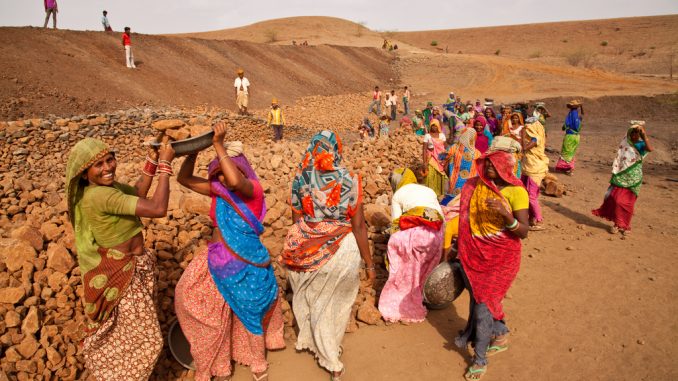
The design of large injections of public funds for India’s agriculture economy needs to be informed with rigorous evaluations on what is effective for higher farm productivity. A wage subsidy for farm-labour is one modification that needs an evaluation, to generate evidence to inform how the MGNREGA policy generates employment when there is need, but without stress to farm production
Indian agriculture is witnessing a period of complex socio-economic distress, evidenced at multiple farmer agitations across rural India, all demanding a higher remunerative price for their crops. According to the latest report of the Commission for Agricultural Costs and Prices (CACP), paddy farmers managed on a marginal return of 4.4% on their investments whereas cotton farmers made a loss of 8.1%. Labour, as one of the largest input costs in farming could impact cost of cultivation and thereby, the profitability. A randomised evaluation in Andhra Pradesh found that the increase in wages for unskilled labour was driven by higher wages from the National Rural Employment Guarantee Scheme (NREGS). An effort needs to be made to evaluate whether modifying the NREGS to provide farmers with labour wage subsidies instead of the guaranteed 100 days of minimum wages to the labourers, may help reduce the agrarian distress that’s sweeping rural India.
The expansion of the multi-crore NREGS and a growing construction sector — both private and public — has given labourers an alternative to farm labour jobs and has driven higher wage rates. A study by an Abdul Jameel Poverty Action Lab (J-PAL)-affiliate, conducted over randomly selected 250 sub-districts of Andhra Pradesh, found that an increase in public-wages also led to a consequent rise in private-wages by up to 24%.
In an ongoing JPAL study by Breza et al., studying the Odisha labour market, a reason for shortage of farm labour has been reported as availability of alternative job opportunities with higher wages. Job opportunities included not just work under the NREGS but a host of other government schemes such as the Pradhan Mantri Awaas Yojana (PMAY), a housing scheme which provides another ninety days of unskilled employment to beneficiaries, above and beyond the 100 days offered under NREGS. Labourers working under PMAY reported earning double the daily wage offered for farm. According to a study by National Council of Applied Economic Research, 1.71 crore labourers from the unorganised sector have been employed so far under this scheme, adding to the higher wage options for rural manual labourers.
A modification in the NREGS could reduce stress on farming by including agricultural tasks on private land as a subset of works allowed under the scheme, and subsidising wages that farmers offer to labourers. Such a wage subsidy would promote labour supply to farmers, and should withdraw the stress of labour supply shortages. Second, sharing of the wage cost between farmers and the government will mean savings on the NREGS budget. Such a modification of the policy could provide a way to reduce budgetary expenditure, expand the coverage of the scheme to a larger population.
At present, the NREGS operational guidelines (2005) exclude all day-to-day agricultural operations such as ploughing, sowing, weeding, harvesting etc from its permissible work list. A legislative amendment to include farm work on private lands into the list of permissible work for agricultural activities would be a huge boost for the productivity of the rural agrarian community. The Maharashtra Employment Guarantee Scheme, one of the first employment guarantee schemes in the country, had included that aspect in its legal tenets by standardising labour payments to farmers working on their own lands, based on measurable farm output.
Since the 1990s, the Centre and state governments have been using capital subsidy tools like loan waivers to bring relief to distressed farmers without accomplishing much, except electoral and political gains. The cumulative debt relief announced by Uttar Pradesh, Punjab and Maharashtra is 60% higher than the budget of NREGS in 2017-18. The design of large injections of public funds for India’s agriculture economy needs to be informed with rigorous evaluations on what is effective for higher farm productivity. A wage subsidy for farm labour is one modification that needs an evaluation, to generate evidence to inform how the MGNREGA policy generates employment when there is need, but without stress to farm production.
Shreoshee Mukherjee is research associate with J-PAL South Asia at IFMR. The views expressed are personal.
Source: Hindustan Times

Leave a Reply